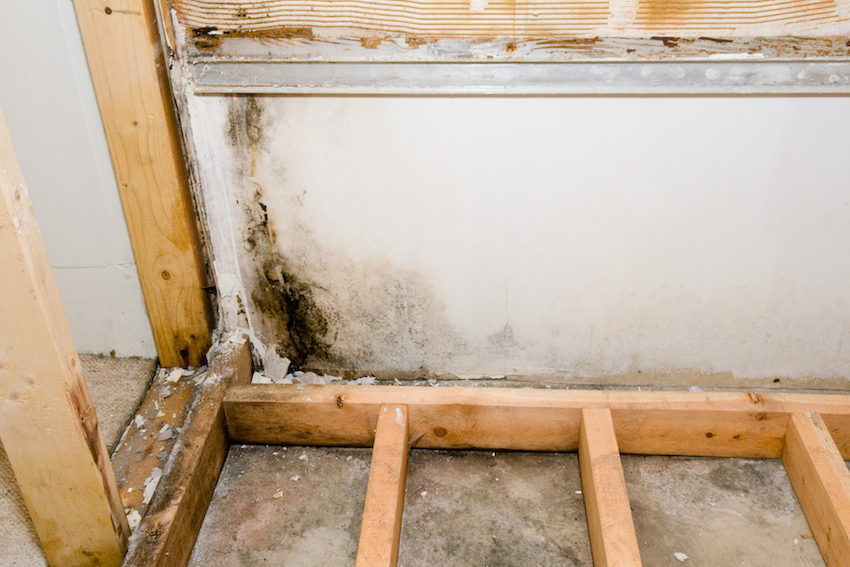Do you need a dehumidifier? 需要除濕機嗎?
A British YouTuber living in Taiwan once made a video titled “What Do You Hate Most About Taiwan?” and interviewed several fellow foreign YouTubers who’ve lived here for years. Surprisingly, the biggest complaint wasn’t traffic, bureaucracy, or the notorious scooter madness—it was the humidity.
Taiwan's summers are hot and sticky, while winters are damp and chilly. Add a string of rainy days, and the humidity shoots way up. When the rain starts to drag on for days, humidity levels can skyrocket. Most dehumidifiers fill up within a day. Without one, you’ll likely run into a whole list of annoying problems, like:
1. Clothes that just won’t dry in wet, cold weather.
2. Once the relative humidity goes over 60%, allergens multiply—mold, bacteria, and dust mites all start thriving.
3. Pets can suffer from fungal skin conditions when humidity is too high, and yes, those can be passed on to humans too.
4. Mold may show up on ceilings, or wall damage like bubbling paint and plaster (aka “wall cancer”) can occur.
5. Wooden floors or carpets can warp, lift, or grow mold due to moisture.

If you already own a dehumidifier, here are a few things to keep in mind:
1. Don’t leave it running all day if no one’s home, especially if it’s just the kids.
2. Don’t place it flush against the wall—it needs room to release heat. Ideally, place it in the center of a flat surface, at least 40–50 cm away from walls, curtains, or furniture.
3. Don’t leave water sitting in the tank for too long—mold can grow there too and damage the machine.
4. Keep doors and windows closed while it’s running, but feel free to open closet or cabinet doors to let the dry air in.
5. If you're using it to dry clothes, keep them at least 40 cm away from the unit, and don’t block the air vents.
No dehumidifier? Can your AC do the trick?
Actually, yes. According to Taiwan’s Ministry of Economic Affairs, air conditioners with a dehumidifying mode are very effective—they can dehumidify in about one-third the time of a regular dehumidifier.
However, there's a downside: they consume twice as much electricity. And to achieve the same dryness level, the “dehumidify mode” needs to run three times longer than the regular “cooling mode.” So, if you want to stay comfortable and save money, just use the cooling mode. It’s energy-efficient and helps you sleep better too.
一位住在台灣的英國籍YouTuber,以「最討厭台灣哪些缺點」為題,訪問多位居住在台灣多年的外籍YouTuber。結果最困擾外國朋友的竟然不是交通,而是悶熱潮濕的天候。台灣氣候夏天悶熱潮濕,冬天濕冷,若遇上陰雨綿綿的日子,溼度大增,通常除濕機開機不到一天,就會滿水,如果沒有使用除濕機,很容易造成以下困擾:
1、濕冷天氣時,衣服曬不乾。
2、相對濕度超過60%十,過敏原孳生,黴菌、細菌、塵蟎更容易生長。
3、寵物因濕度太高而免疫力下降,對黴菌的抵抗力也變低時,可能造成黴菌皮膚病,飼主也可能被傳染。
4、牆面或天花板產生壁癌或牆角發霉。
5、木地板或地毯,因受潮而翹起變形或發霉。
遇上這些潮濕困擾時,家中有除濕機使用時須注意:
1、家中無人或者只有小孩在家時,不可長時間開啟。
2、除濕機不可「靠牆」放置,以免阻礙散熱。建議放在空間正中央,而且是地面平坦的之處,距離家具、窗簾或牆面至少40~50公分處。
3、不可長時間讓水箱泡水,發黴也會殃及機器。
4、關閉門窗,同時可打開衣櫃門、書櫃門。
5、烘乾衣物時,與衣物至少相隔40公分,尤其不可遮蔽到機體,才不會阻礙出風。
若未添購除濕機,冷氣機除濕功能好用嗎?經濟部能源署在官方臉書表示,冷氣除濕的效果非常好,只需要除濕機大約1/3的時間,但是「耗電量卻足足高出2倍之多」。此外使用冷氣除溼,要達到同樣的溼度,「除濕模式」的運轉時間是「冷氣模式」的3倍,建議不論要吹涼還是要除濕,請直接開啟冷氣模式,省錢又能睡得好。
依著作權法第十及八十八條,本網站內容未經上品房屋同意請不得轉載
